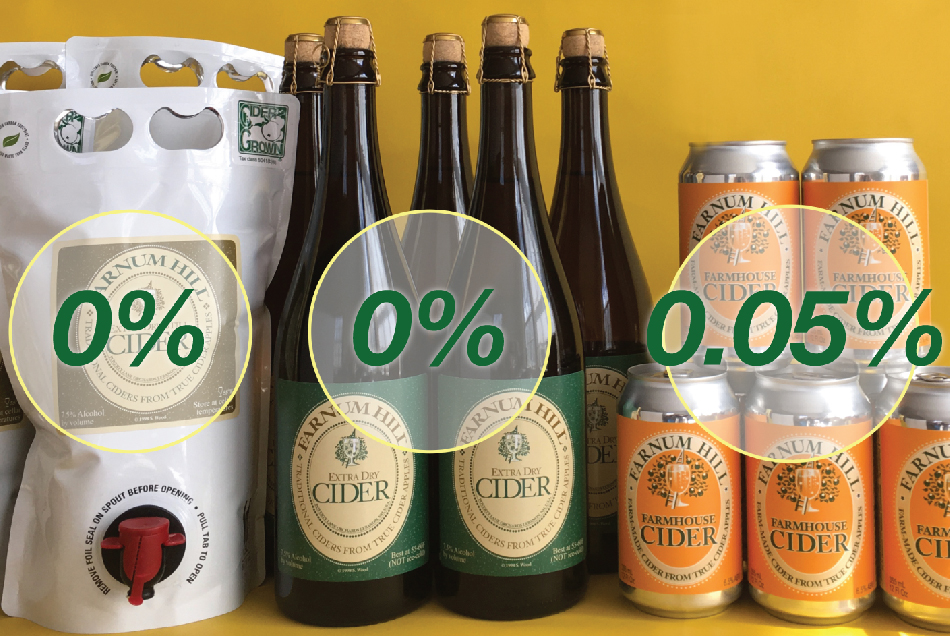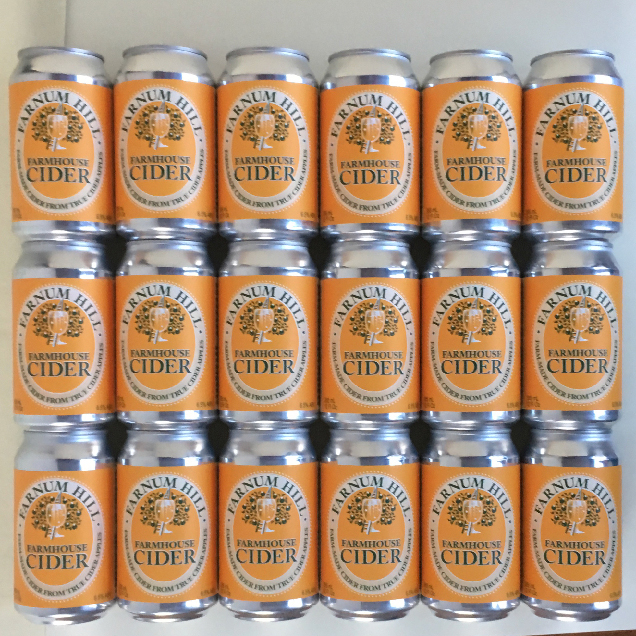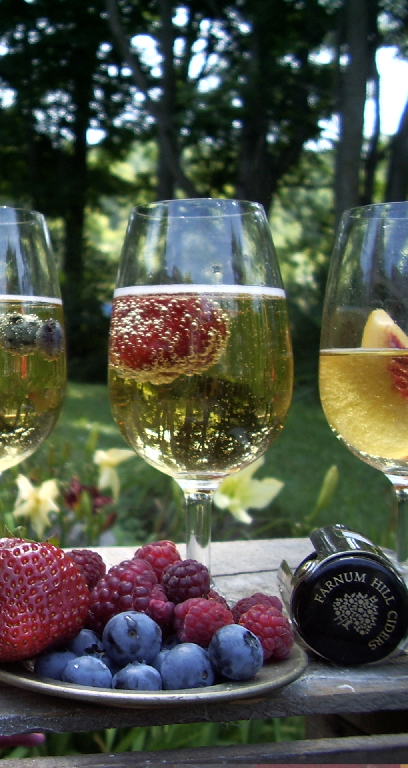Events

How Much Sugar?
No sugar at all in our Extra Dry and the Extra Dry Still. Zip, bupkis, goose-egg. That's because no sugars from the apple juices are left in the ciders after fermentation. We ferment all our batches to complete dryness, which means all the sugars contributed by apples have been turned into alcohol. And for XD and XDS, we don’t add any sugar back. (FYI many many “brut” Champagnes contain a small “dosage” of added sugar, up to maybe 8 grams per liter.) So our Extra Dry ciders are totally sugar free. (Calories, about 16 per fl. oz, come from the 7.5% ABV.)
In our Farmhouse we use a “dosage” of 4-6 grams per liter. That's how we end up with the 0.05% percentage above. In fact we haven't gone over 4 grams per liter in the last several Farmhouse blends - they've tasted great with 4 or less. All our fermentations, including all that end up in Farmhouse, go to total dryness. (The yeast converts all apple sugars in the juice to alcohol.) Then, to each Farmhouse blend, we add back a slight “seasoning” - the dosage - to bring out the fruitier flavors without adding perceptible sweetness. (That’s why Champagne makers do it, too.) For the last several batches we haven’t used more than 4 grams (that’s a teaspoon) per liter (that’s over two and two-thirds cans.) Next time we print the can label, we’ll list the percentage of sugar as half of one percent by volume. Each can holds 12 fluid oz. (Nearly all Farmhouse calories, about 13 per fl. oz, come from the 6.5% ABV.)
For perspective: ONE 12-oz serving of a very popular mass-market cider contains nearly six teaspoons of sugar - 23.4 grams. (Think "Irritable Apple Trees," but most mass-market ciders contain similar amounts.) To get that much sugar from our Farmhouse, simply drink everything in this photo except the last two cans:

CAUTION: If cider’s sugar content is important to you, watch out for the phrase “No added sugar” on the label. It often means the cider has been sweetened with apple juice concentrate. For diabetics and other sugar-watchers, that's no better than sucrose, but concentrate doesn't have to be listed as “added sugar.” A lot of cider brands use this dodge. At the craft/higher-priced end of the market - hand-made ice ciders, or low-alcohol "cidres doux" - the makers stop fermentation before all the fruit sugar is gone. The remaining sweetness comes from "residual sugar" - search that term for reams of fermentation nerdology.
Farnum Hill ciders are fun to play with. Control sugar content yourself by adding fruit cordials or - fruit! People who need to watch their sugar have lots of options. Summertime is cider-time: join in!

